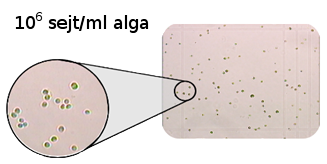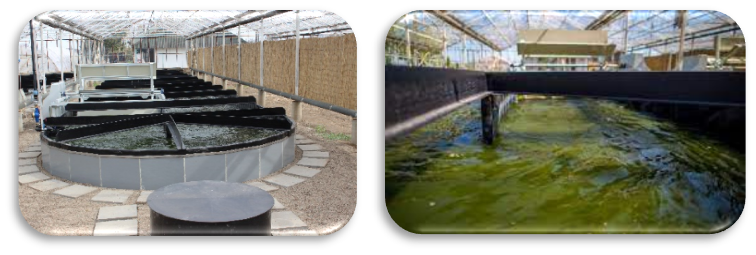Miért a VegaAlga
Ez a legígéretesebb megoldás a bioüzemanyag-előállításra, alkalmas állati vagy emberi táplálék-kiegészítők, fehérjék, szénhidrátok gyártására, valamint a növénytermesztésben termésnövelőként, növénykondícionálóként alkalmazható, lehetővé téve a műtrágyák részleges kiváltását is.
Az alga előnye a műtrágyához képest, hogy a növények az ebben levő hatóanyagot jobban és gyorsabban hasznosítják. Az alga javítja a növények ellenálló képességét, növeli a terméshozamot, míg csökkenthető a műtrágya felhasználás.
A mikroalgák közül az egyik legjobban hasznosítható alga a Chlorella sp., ami a VegaAlga legfőbb összetevője is.
A VegaAlga pozitívan befolyásolja a kezelt növények tápanyagfelvevő és stressztűrőképességét, valamint hozzájárulhat a gyökérzet és a zöldtömeg növeléséhez.
Fokozza a növények ellenállóképeségét, gyorsítja a termésfejlődést, így rövidíti a termesztési időt. Mivel segíti a tápanyag-hasznosítást, csökkentheti a növények műtrágyaigényét.



Mi a VegaAlga?
Az alga készítmények népszerűsége folyamatosan nő, ahogy az algák pozitív hatása egyre szélesebb körben válnak ismertté.
A VegaAlga egy élő alga sejteken alapuló termésnövelő mikrobiológiai készítmény.
A VegaAlgának bizonyítottan pozitív hatása van a zöldségkultúrákra, illetve szántóföldi kultúrákra egyaránt. Saját tesztek során 30% műtrágya kiváltását tette lehetővé.
Az alga előnye a műtrágyához képest, hogy a növények az ebben levő hatóanyagot jobban és gyorsabban hasznosítják.
A VegaAlga javíthatja a növények kondícióját, ellenálló képességét, és akár 36%-kal növelheti a terméshozamot, miközben a termés minőségét is javíthatja (cukortartalom).


